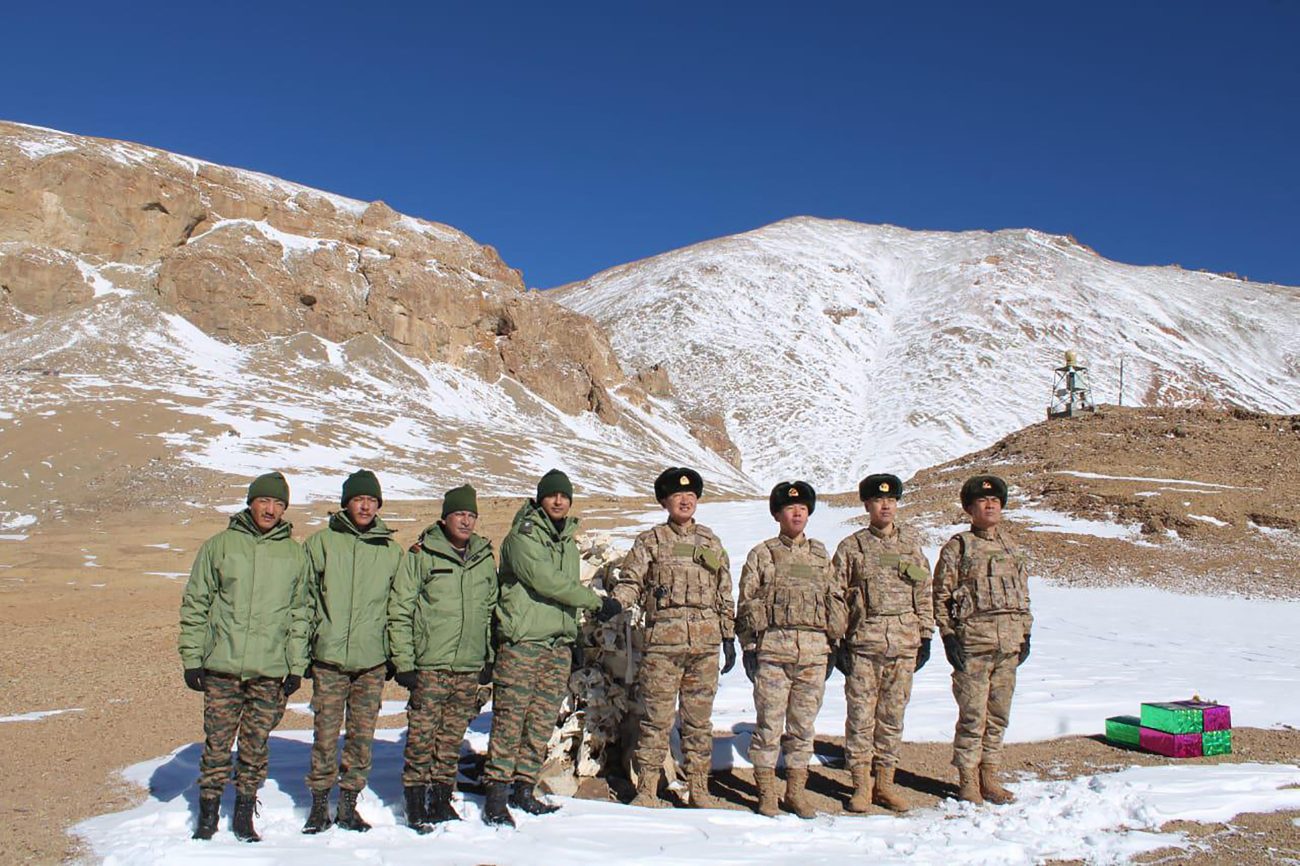OPED By Dr. Imran Khurshid
China’s disinformation war is redefining conflict, targeting minds, not just borders. If India wins on the ground but loses the narrative, the strategic victory remains incomplete.
Recent findings by French intelligence have confirmed that China orchestrated a coordinated disinformation and misinformation campaign aimed at undermining India’s defense capabilities, specifically targeting the French-made Rafale fighter jets.
The campaign’s objective was clear: to erode India’s defense posture and weaken France’s expanding strategic partnerships in Asia by casting doubt on the credibility of its defense exports.
According to Justin Bronk of the Royal United Services Institute, the Rafale was deliberately targeted due to its strategic significance and high visibility. The French Ministry of Defense emphasized that this was not merely an attack on a fighter aircraft but a direct assault on France’s industrial credibility, strategic autonomy, and global defense relationships.
Chinese embassies—particularly through their defense attachés—played a central role in amplifying the campaign, repeating false narratives in diplomatic meetings with defense officials from key countries. The operation also utilized manipulated images, AI-generated visuals, fake combat depictions from video games, and more than 1,000 fabricated social media accounts to push narratives of Chinese military superiority, especially in the context of Operation Sindoor.
China and Pakistan engaged in coordinated information warfare, strategically leveraging social media platforms such as X (formerly Twitter), Facebook, and YouTube to delegitimize India’s military posture, undermine its credibility, and promote the perception of Chinese-Pakistani defense superiority.
China’s Deepening Footprint In Pakistani Media
The roots of this campaign go deeper.
In 2019, China’s state-run Xinhua agency granted Pakistani media free access to its multimedia content in both English and Urdu.
On October 8, 2019, Xinhua launched a bilingual service in collaboration with Independent News Pakistan (INP). Xinhua President Cai Mingzhao stated that the initiative would “help the Pakistani people have a timely and comprehensive understanding of China,” while INP Editor Syed Asif Salahuddin said it would “help more Pakistani people know about the positive effects of the China-Pakistan Economic Corridor.”
This was followed by the launch of initiatives like the Rapid Response Information-Exchange Network (RRIN), established by the Pakistan-China Institute and China Economic Net, to counter criticism of the China-Pakistan Economic Corridor (CPEC) and Belt and Road Initiative (BRI).
According to a 2023 DFRAC report, RRIN was “initiated to counteract ‘fake news’ about CPEC.” Pakistani media, incentivized through financial support, journalist exchange programs, and free syndicated content, increasingly mirrored Beijing’s narratives, portraying China as a benevolent partner while glossing over mounting debt, failed infrastructure, and public discontent in Pakistan.
China has essentially gained narrative control over large segments of Pakistan’s media. A 2020 report by the South Asia Democratic Forum (SADF) warned that these agreements have allowed Beijing to “disseminate its views in Urdu from within Pakistan,” shaping public discourse to favour Chinese interests.
This manipulation serves not only Chinese foreign policy but also Pakistan’s diplomatic agenda, especially against India. The First China-Pakistan Media Forum, organized in Islamabad in 2015 and supported by Chinese state media, even urged closer collaboration to counter “false information”—a euphemism for suppressing criticism and amplifying propaganda.
Psychological Warfare & Narrative Control
China’s information warfare isn’t limited to defense. During India’s G20 presidency, it took aim at New Delhi’s global reputation. Beijing amplified claims that India was “too poor to host the G20,” spread fake interviews with Indian diplomats, and even accused India of deliberately snubbing President Xi Jinping.
Just days before the G20 Summit, China released provocative maps staking territorial claims over Arunachal Pradesh and Aksai Chin, while officially announcing that President Xi would not attend.
Think tanks in China joined in, accusing India of “sabotaging the cooperative atmosphere” by holding G20 meetings in disputed regions. China also criticized India’s choice of the Sanskrit phrase “Vasudhaiva Kutumbakam” (the world is one family) as the G20 theme, arguing that it wasn’t a UN-recognized language—another subtle dig at India’s cultural diplomacy.
Back home, the attacks were even more insidious. During the ethnic conflict in Manipur, Chinese media falsely claimed it was the result of the Modi government’s alleged crackdown on religious minorities, calling Manipur “Little China.” Indian officials viewed these claims as dangerous provocations aimed at stoking communal tensions and spreading instability.
During the COVID-19 pandemic, China crossed all ethical boundaries by intensifying its anti-India disinformation campaigns.
It circulated AI-generated images depicting mass cremations and fabricated visuals showing large numbers of dead bodies floating in rivers, especially the Ganges.
Such psychological operations are part of China’s long-standing strategy to erode India’s global image and weaken its rivals through narrative dominance.

China’s Influence In Global Academia & Media
China’s propaganda is not limited to media partnerships. It extends deep into global academia. According to U.S. Department of Education data, top universities—including Harvard, Stanford, and Yale—received over $1 billion in Chinese funding between 2013 and 2020.
Concerns about military links and ideological influence led several institutions to sever ties with Chinese government-linked programs, including Confucius Institutes. A 2019 U.S. Senate report warned that such funding can compromise academic freedom and national security.
Under the guise of education and fellowships, China’s People’s Liberation Army (PLA) has sent over 2,500 military-affiliated researchers abroad as part of its Military-Civil Fusion (MCF) strategy. These individuals, often trained in dual-use technologies, operate under CCP loyalty oaths and are closely monitored by Chinese embassies. Their goal is captured by the phrase: “Pick flowers in foreign lands to make honey in China.”
In India, Chinese efforts to shape public discourse have included the establishment of 7 Confucius Institutes and 17 Confucius Classrooms across universities, many of which were placed under review by the Ministry of Education in July 2020 following intelligence reports warning of their potential use for propaganda and influence operations.
China has also used regional language apps and platforms, such as UC News (owned by Alibaba) and NewsDog (operated by Hacker Interstellar), to channel CCP narratives in Malayalam, Telugu, Odia, and Urdu. These apps were among the 59 Chinese platforms banned by the Indian government on June 29, 2020, under Section 69A of the IT Act, for posing risks to national sovereignty, security, and public order.
Additionally, Indian intelligence agencies have flagged Chinese-sponsored journalism fellowships, think tank linkages, and media exchange programs, which were designed to influence Indian journalists, writers, and researchers—some of whom, knowingly or unknowingly, echoed CCP-aligned narratives, particularly on sensitive issues such as border tensions, economic partnerships, and geopolitical alignments.
Western Media’s Complicity & India’s Weak Response
Moreover, during Operation Sindoor, the Western press didn’t exactly leap to India’s defense. While some outlets cautiously described it as a “calibrated” strike, others questioned its success or uncritically echoed China’s and Pakistan’s claims, including unverified reports of Indian fighter jets being shot down.
China has its strategic objectives. Why the hesitation from Western media?
One reason is India’s continued reliance on Russian defense platforms such as the Su-30MKI and BrahMos. Amid the ongoing Ukraine war—and with India still sourcing a substantial portion of its military hardware from Russia—many Western analysts were reluctant to highlight the effectiveness of Russian systems, as this could undermine the broader Western narrative against Moscow.
Additionally, there is a commercial motivation: several Western nations are keen for India to reduce its dependence on Russian arms and shift its defense procurement toward Western suppliers, which is why there is often a tendency to downplay Russian platforms.
Meanwhile, during Operation Sindoor, India’s response was slow and reactive. There was no immediate strategic communication or coordinated counter-narrative from official institutions, creating an information vacuum quickly filled by Chinese and Pakistani disinformation.
Pakistan’s ISPR, backed by coordinated bot networks, flooded social media platforms like X, Telegram, YouTube, and Instagram with fabricated visuals, deepfakes, and false narratives—reportedly pushing over 200,000 posts in the first 48 hours. Simultaneously, Chinese state media and diplomats amplified these claims while promoting Beijing’s own military prowess and technological reliability.
New Delhi must recognize that modern warfare is no longer confined to territory—it plays out in the infosphere. In this age of perception wars, psychological operations, and narrative manipulation, dominance in the Information domain is as crucial as supremacy in the skies or seas.
The West, while often an partner, also has its own agenda—and India’s strategic communication must be agile enough to navigate both adversarial disinformation and opportunistic silence.
Conclusion
China’s aggressive disinformation campaigns—from undermining Rafale jets and discrediting Operation Sindoor to manipulating narratives around India’s G20 presidency and internal affairs—reflect a broader strategy of narrative warfare.
Through psychological operations, digital propaganda, and media infiltration, Beijing seeks not only to challenge India’s military and diplomatic standing but also to shape global perceptions in its favour.
Pakistan’s media dependence on China and the complicity of certain Western outlets—due to geopolitical interests and economic alignments—have further amplified this asymmetric assault.
What emerges is a clear pattern: while India may win battles on the ground, it risks losing the war of narratives if it does not counter disinformation with strategic foresight and information resilience.
To defend its sovereignty in the information age, India must develop a comprehensive narrative warfare doctrine—one that integrates diplomatic signaling, real-time media response, cyber vigilance, and strategic storytelling.
The next frontier of national security lies not only in deterrence and defense, but in mastering the domain of perception.
- Dr. Imran Khurshid is an Associate Research Fellow at the International Centre for Peace Studies (ICPS), New Delhi. He specializes in India-US relations, Indo-Pacific studies, and South Asian security issues.
- VIEWS PERSONAL OF THE AUTHOR




